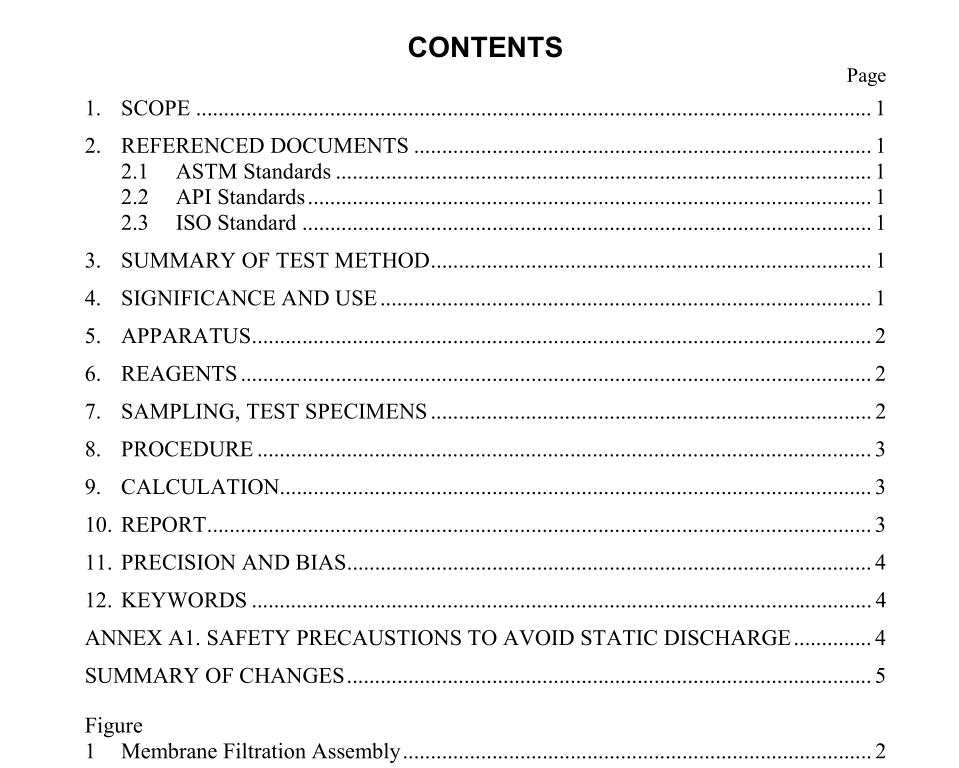API MPMS 10.8 pdf download

API MPMS 10.8 pdf download,Standard Test Method for Sediment in Crude Oil by Membrane Filtration
5. Apparatus
5.1 Funnel and Filter Support Assembly—Use an assembly designed to hold 47-mm diameter filters as was used in the development of this test method (see Fig. 1). 5 5.1.1 Filter Funnel—Use a filter funnel with a 250 mL minimum capacity. The lower part of the funnel has a 40-mm inside diameter and is designed to secure the 47-mm diameter filter against the filter support. The funnel can be jacketed to facilitate heating the solvent funnel and sample during filtering. N OTE 1—Use of a glass funnel should minimize the effect of static electricity when filtering. 5.1.2 Filter Support—Use a support base for the filter that has a porous scintered glass center section about 40 to 43 mm in diameter. The support base is designed to fit securely against the funnel holding the filter in place over the porous section. The filter support’s stem should be long enough to extend down into the filter flask such that the end is below the vacuum connection. 5.1.3 Clamp Assembly—Use a spring or screw type clamp to secure the funnel to the filter support. The clamp should be tight enough to prevent the solvent from leaking through at the junction between the glass and filter membrane. The exterior dimensions of the funnel and support are designed to facilitate clamping the two pieces together. 5.1.4 Rubber Stopper—Use a single-hole, capable of hold- ing the lower stem of the filter support securely onto the filtering flask. 5.1.5 Vacuum Filtering Flask—Use a 500 mL or larger vacuum filtering flask. 5.2 Membrane Filter—Use a nylon membrane filter, 47 mm in diameter with 0.45-µm pore size. 6 5.3 Oven—Use an oven capable of maintaining a tempera- ture of 105 6 2°C (220 6 4°F). 5.4 Vacuum Pump—Use a vacuum pump capable of reduc- ing and maintaining the pressure at −80 kPa (−24 in. Hg) during the filtering. 5.5 Analytical Balance—Use an analytical balance capable of measuring to the nearest 0.0001 g. 5.6 Heating Coil for Filter Assembly—Use copper tubing (3.175 mm or 1 ⁄ 8 -in. diameter) wound around the funnel on the filter apparatus and connected to a circulating bath to maintain the oil in the funnel at 90 6 2°C (see Fig. 1). Alternative methods of heating the funnel such as heating tape or glass thermal jacket could also be used. 5.7 Mixer—Use a nonaerating, high-speed mixer meeting the verification efficiency requirements specified in Practice D 5854 (API MPMS Chapter 8.3). Either insertion mixers or circulating mixers are acceptable provided they meet the criteria in Practice D 5854 (API MPMS Chapter 8.3). 5.8 Cooling Vessel—Use a desiccator or other type of tightly covered vessel for cooling the membrane filter before weighing. The use of a desiccant/drying agent is not recom- mended. 5.9 Ground/Bond Wire—Use a 0.912–2.59 mm (No. 10 through No. 19) bare stranded flexible, stainless steel or copper wire installed in the flask through the vacuum connection and connected to ground.
6. Reagents
6.1 Toluene—Reagent grade chemicals shall be used in all tests. Unless otherwise indicated, it is intended that all reagents shall conform to the specifications of the Committee on Analytical Reagents of the American Chemical Society, where such specifications are available, 7 or to Grade 2 of ISO 5272. Other grades may be used, provided it is first ascertained that the reagent’s lot or batch is of sufficiently high purity to permit its use without lessening the accuracy of the determination. (Warning—Flammable. Keep away from heat, sparks and open flame. Vapor harmful. Toluene is toxic. Particular care shall be taken to avoid breathing the vapors and to protect the eyes. Keep the container closed. Use with adequate ventilation. Avoid prolonged or repeated contact with the skin.)









